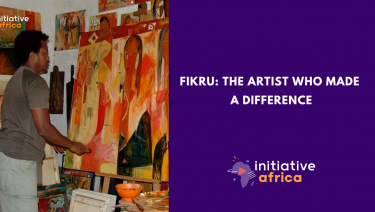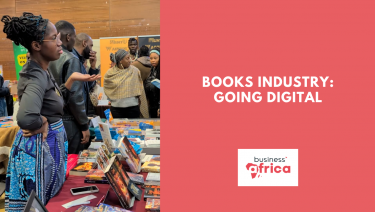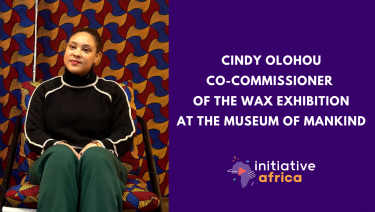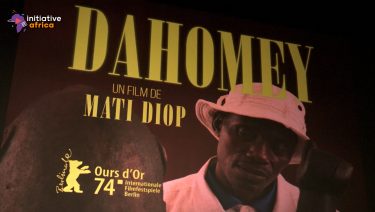Slaves No More

[Antoine Lamoraille : Trapu misi ya nenge kondre, te i si bendi dede udu da mi mu fele, « Tu as su éviter le piège qui a pris tes frères, désormais méfie-toi de l’arbre qui penche ». Acrylique sur bois massif, 200 x 80 cm. Coll. Mama Bobi.]
By Heidi Ellison
The fascinating story of the Maroons of French Guiana and Suriname is told through their applied and visual arts in the exhibition “Marronnage: L’Art de Briser ses Chaînes” at the Maison de l’Amérique Latine (through September 24, 2022) in Paris.
Who are the Maroons? They are the descendants of people who were rounded up from different parts of Africa in the 17th and 18th centuries and shipped to the two South American countries to work as slave laborers on plantations. Refusing to accept this terrible fate, they revolted and disappeared into the Amazonian forest, where they built villages that have survived the centuries in spite of the slave-owners’ brutal but ultimately more or less futile attempts to find them and bring them back to the plantations. In their hidden villages, these disparate peoples built a new life that required them to develop a language and culture. Tempe (art) was – and still is – a vital component of that world. The exhibition celebrates their culture by displaying both historic and contemporary pieces. The former are beautifully decorated everyday or ceremonial items, including combs, pagnes, paddles and platters.
Interpretations of historical designs

The contemporary works on exhibit, many of them painted on paper or canvas rather than on houses, doors or other near-to-hand supports as in the past, show the influence of the Maroon culture as interpreted by 13 talented artists, who are still very much attached to their villages and unique culture. They freely interpret the colorful intertwining designs found on traditional objects, but today they have access to a wide range of materials and colors that were not available to their predecessors.
The sophistication of the historical objects is striking. The combs, intricately carved in wood by men, were traditionally given to their wives and lovers. One of the participating artists, Carlos Adaoudé, known as Kalyman, who was born in the village of Papaichton, French Guiana, remembers a particular comb that had been given to his grandmother by her first husband. “She never used it,” he said at the opening of the exhibition, “but she would take it out from time to time and stroke it.” Such objects are now also made for sale to tourists, but they retain their meaning for the Maroons. “What’s important is not the object but what it says,” said painter Antoine Dinguiou, citing Antoine Lamoraille, an Aluku artist and activist.
Influence of Africa

Groupe d’esclaves débarquant du bateau de négriers. Port de Paramaribo. Coll. Jean-Paul Duviols.]
What remains of the African heritage of the people stolen from their homes and “marooned” in South America centuries ago? “There are traces of African society,” said historian Geneviéve Wiels, one of the exhibition’s curators, “but since slaves from different countries were mixed together, no one country was dominant.”
The other curator, anthropologist Thomas Mouzard, pointed out that the slave owners were careful not to bring people from the same groups together so that they wouldn’t speak the same language. “It was a tactic to prevent revolts,” he said, adding that the works on show are “original creations, creolizations based on individuals’ memories of different societies in Africa, sometimes even East Africa.”
The poetry of these works, both new and old, lies in the deep meaning they still hold for the Maroons. As the French anthropologist and geographer Jean Hurault said in 1970, “The tradition asks [the artist] to put the best of himself into the decoration of even the most humble object.”
See also
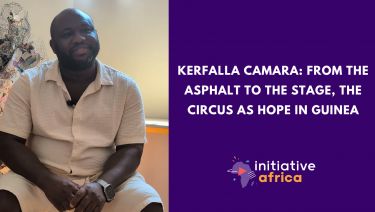
Kerfalla Camara: From the asphalt to the stage, the circus as hope in Guinea
Making circus a lever for education and social change. Born in the streets and trained in the circus, Kerfalla Camara is now the head of Circus Baobab, Guinea's first circus company, which has become a benchmark in West Africa. In this exclusive interview, he discusses: - The rebirth of Circus Baobab, a socially engaged circus - The fight to provide education to out-of-school children - The Guinean cultural roots in each show - The courage to tackle taboo subjects, such as female genital mutilation, in their latest creation, Yongoyely A powerful account of art as a tool for emancipation and social transformation. Journalist: Alexandra Vépierre
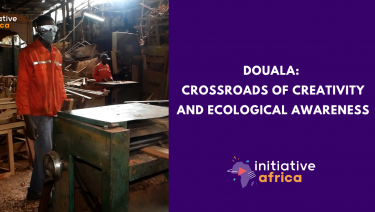
Douala: Crossroads of Creativity and Ecological Awareness
In Cameroon, the artisanal woodworking industry is taking an eco-responsible turn. Faced with increasing deforestation, some sculptors, like Jean-Claude Dongmo, are choosing to recycle abandoned materials into unique works of art. In this report filmed in Douala, discover how these artisans: - Reinvent their traditional know-how - Train young people in sustainable trades - Contribute to the preservation of Cameroon's forests An immersion at the intersection of art, knowledge transfer, and environmental commitment. Journalist: BOUNYA Maxime Farrel
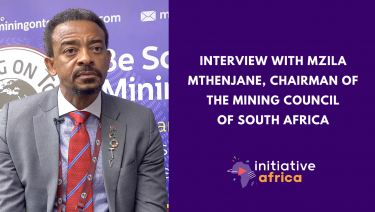
Interview with Mzila Mthenjane, Chairman of the Mining Council of South Africa
In this exclusive interview, Mzila Mthenjane, CEO of the Minerals Council South Africa, shares his insights on the evolution of mining across the continent. • Should artisanal mining be banned or integrated? • How can ESG projects deliver real impact on the ground? • Could regional cooperation unlock sustainable growth in the mining sector? From South Africa’s mining reforms to the Inga dam in the DRC, this conversation sheds light on how mining can serve as a catalyst for long-term development in Africa. Journalist: Laurence Soustras
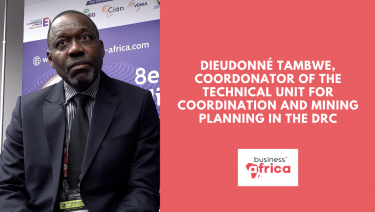
Dieudonné Tambwe, coordinator of the Technical Unit for Coordination and Mining Planning in the DRC
In this exclusive interview, Professor Dieudonné Tambwe, coordinator of the Technical Unit for Mining Coordination and Planning in the DRC, discusses the country's ambitions for mining diversification and local processing. Copper, cobalt, germanium, platinum, iridium, uranium... the DRC intends to go beyond raw minerals to build a genuine local industry focused on battery components and electric vehicle assembly. This discussion is worth following to understand how the Congolese strategy relies on special economic zones, regional cooperation, and expertise shared with partners such as Zambia and Morocco.
